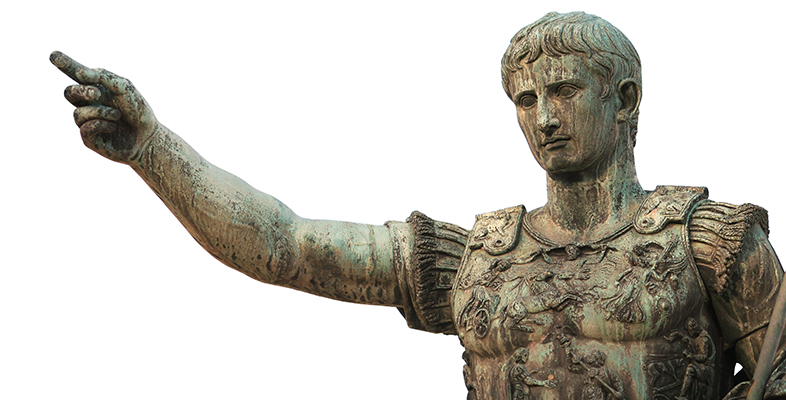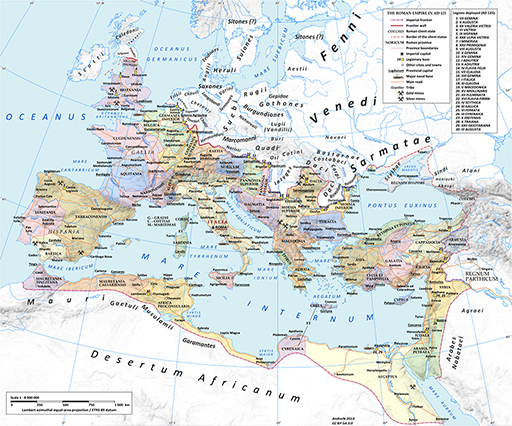3.2 The toga in Roman culture
But why would a man bother with the expense of a toga at all? The answer lies in what the toga symbolised.
First, it signified Roman citizenship. From the first century BCE onward, with the exception of enslaved people, most residents of Italy and especially the city of Rome will have held Roman citizenship status, which gave them, e.g., the right to vote and participate in Roman government, to marry and bequeath property and certain tax breaks. Citizenship could be acquired by people in the provinces (the areas Rome conquered: see Map 2) if they fulfilled certain criteria, but the further away one went from Rome, the fewer people will have had it. As a result, it was something of a privilege. If you did not possess Roman citizenship status, you were forbidden from wearing the toga, so it served as a kind of clothing passport.
Second, as it symbolised specifically Roman citizenship, the toga was, at the same time, a key emblem of Roman identity, a bit like the kilt for the Scots or the kimono for the Japanese today. This is why the poet Virgil called the Romans ‘the masters of the world, the toga-clad race (gens togata)’ (Aeneid 1.281–2).
Third, the toga symbolised civic duty and Republican egalitarianism. During the Republic, all Roman citizens, rich or poor, were theoretically equal in the eyes of the law. (No matter that in reality the rich found ways to have greater power!) All male Roman citizens were expected to participate in public and political life, e.g. as voters, participants in key state ceremonies, and, if they could afford it, as magistrates and/or senators. Not all inhabitants of Rome will have been Roman citizens: there will have been many enslaved people and immigrants excluded from citizenship, but the principle of the Republic was nonetheless more inclusive than most other pre-modern political system. The relative egalitarianism of the Republic is what set it apart from other ancient societies, where most people were passive subjects of powerful rulers, rather than active citizens with rights and responsibilities.
Fourth, the toga symbolised peace. It was the dress of civic life and civilised political discourse, which for the Romans were the polar opposite of war. In fact, military clothing and weapons were forbidden inside the walls of Rome. The historian Livy (59 BCE–17 CE), in his account of origins and history of Rome, used the phrase ‘while they were still in the toga’ (dum togati sint) to describe generals who had not yet left on military campaign (3.10) and the politician and prolific writer Cicero (106–43 BCE) praised the first-century-BCE general and statesman Julius Caesar for being ‘clarus in toga’ – ‘distinguished’ (clarus) in civilian (as opposed to military) life (Letters to Friends 6.6.5).
Yet there were different types of toga and different ways of wearing it. You will turn to some of them now.

